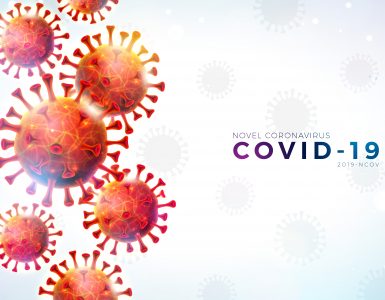Antibiotic resistance is gained by germs like bacteria and fungi. There they develop the ability to defeat the drugs designed to kill them. So, the germs are not killed and continue to grow. As a result of this the infections caused by antibiotic-resistant germs become difficult, and sometimes impossible, to treat. In most cases, antibiotic-resistant infections require extended hospital stays, additional follow-up doctor visits, and costly and toxic alternatives.
Here the body is not becoming resistant to antibiotics; it is that bacteria have become resistant to the antibiotics designed to kill them. Ever since the day that the first commercialized antibiotic, penicillin was discovered there has been discovery and acknowledgement of resistance alongside the discovery of new antibiotics. In fact, germs will always look for ways to survive and resist new drugs. More and more, germs are sharing their resistance with one another, making it harder for us to keep up.
Antibiotics save lives but any time antibiotics are used, they can cause side effects and lead to antibiotic resistance. Their defense strategies are called resistance mechanisms. Bacteria develop resistance mechanisms by using instructions provided by their DNA. Often, resistance genes are found within plasmids, small pieces of DNA that carry genetic instructions from one germ to another. This means that some bacteria can share their DNA and make other germs become resistant.
There are two main ways that bacterial cells can acquire antibiotic resistance. One is through mutations that occur in the DNA of the cell during replication. The other way that bacteria acquire resistance is through horizontal gene transfer. This is how antibiotic resistance spread through a population. Antibiotic-resistant germs can multiply. Some resistant germs can also give their resistance directly to other germs. And also, once antibiotic resistance emerges, it can spread into new settings and between countries.

Figure 01: Ways that bacteria acquire resistance.
Source:https://publichealthonline.gwu.edu/blog/antibiotic-resistance-at- cellular-level/
There are several defense strategies of bacteria such as restrict access of the antibiotic, get rid of the antibiotic, change or destroy the antibiotic, bypass the effects of the antibiotic, change the targets for the antibiotic. Antibiotic-resistant germs can quickly spread across settings, including communities, the food supply, healthcare facilities, the environment (soil, water), and around the world. Healthy habits can protect us from infections and help stop germs from spreading. Getting recommended vaccines, keeping hands and wounds clean, and taking good care of chronic conditions, like diabetes. And also asking your healthcare provider about risks for certain infections and sepsis, speaking up with questions or concerns also can do. Always remember to keep cuts clean and covered until healed, and take good care of chronic conditions, like diabetes or heart disease.
Four simple steps can be followed to avoid foodborne infections. Such as cleaning your hands, cooking utensils, and surfaces. And also separate raw meat from other foods and cook foods to safe temperatures. Chill leftovers and other foods promptly. It is very important to follow above steps because antibiotic resistance becomes a big health issue as it has the potential to affect people at any stage of life, as well as the healthcare, veterinary, and agriculture industries. So, no one can avoid the risk of resistant infections completely, but people with chronic illnesses are at greater risk than others. If antibiotics lose their effectiveness, then the ability to treat infections and control public health threats is also lost. This is really dangerous because many medical advances are dependent on the ability to fight infections using antibiotics, including joint replacements, organ transplants, cancer therapy and treatment of chronic diseases like diabetes, asthma, and rheumatoid arthritis.
Every country has taken steps to slow antimicrobial resistance. They have committed to setting goals across multiple sectors, including healthcare, food, communities and environment and also created and implemented a comprehensive plan with a One Health approach to achieve those goals and track progress. Every country plan can consider the following actions to prevent resistant infections and their spread such as implement infection prevention and control practices, improve antibiotic use, including ensuring access, implement data and tracking systems to track resistance, guide prevention strategies, and report results at the local and global level and improve lab capacity to identify resistant bacteria. In addition to these important actions, it is also critical to join the global effort to develop new drugs, diagnostics, vaccines, and therapeutics to treat infections.
As responsible citizens we also can follow healthy tips to prevent resistance against antibiotics. Don’t take antibiotics unless you’re certain you need them. Always ask your doctor if antibiotics will really help. For illnesses caused by viruses such as common colds, bronchitis, and many ear and sinus infections, I think they won’t. And remember to finish your pills. Take your entire prescription exactly as directed. Do it even if you start feeling better. If you stop before the infection is completely wiped out, those bacteria are more likely to become drug-resistant. Get vaccinated. Immunizations can protect us against some diseases that are treated with antibiotics. They include tetanus and whooping cough.
Author: Nishinki Thakshana de Silva
B.Sc. (Special degree in BioChemistry and Molecular Biology) – Undergraduate
Faculty of Science University of Colombo
References:
1.https://www.cdc.gov/drugresistance/about.html (Accessed on 27.06.2020)
2.https://publichealthonline.gwu.edu/blog/antibiotic–resistance–at–cellular–level/ (Accessed on 27.06.2020)






Add comment